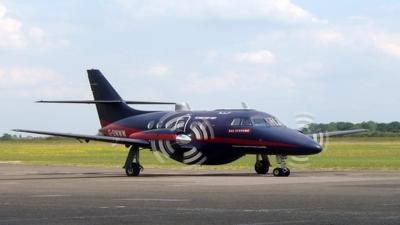Sun, Jun 24, 2012
Trials Will Include First Autonomous, Vision-Based Weather-Avoidance Routing
A Jetstream aircraft known as ‘The Flying Test Bed’, which can fly as if it were a UAV, is undergoing a series of flight trials in preparation for the first maiden flight of a surrogate UAV in UK shared airspace later this year.

The aircraft will fly using Instrument Flight Rules under air traffic control. In preparation, trials taking place this month include the world’s first use of autonomous, vision-based weather-avoidance routing and the first UK surrogate flight of a fully functional visual sense-and-avoid system which includes collision avoidance tests using a second aircraft. This trial will begin to demonstrate to regulators such as the Civil Air Authority and air traffic control service providers, the progress made towards achieving the safe use of UAVs in UK airspace.
The new technology is part of a suite of innovations being brought together for the first time as a UK industry-led program known as ASTRAEA (Autonomous Systems Technology Related Airborne Evaluation & Assessment); a UK industry-led consortium focusing on the technologies, systems, facilities, procedures and regulations that will allow autonomous vehicles to operate safely and routinely in civil airspace over the United Kingdom.
Lambert Dopping-Hepenstal, the Engineering Director at BAE Systems responsible for the ASTRAEA programme said: “The use of a surrogate Uninhabited Air Vehicle allows prototype autonomous systems developed by the ASTRAEA team to be evaluated safely in the air. The BAE Systems Jetstream Flying Test Bed has been configured as a “surrogate UAV’ where the on-board pilots can take their hands off the controls and hand over control to the on-board system developed by the ASTRAEA team. Racks of computers and control systems in the rear of the aircraft mean it can fly as if it were a UAV without any input from the pilots.
He continued: “The ASTRAEA system is capable of preventing mid-air collisions with other aircraft using a ‘sense and avoid’ system, detecting and avoiding bad weather conditions and relaying air traffic control instructions to the remote pilot via satellite to the ground control station. The weather avoidance system will use sophisticated image processing techniques to detect and avoid clouds and is just one of the new capabilities being tested on board the Jetstream.”
From now and until the winter, the ASTRAEA system on-board the Jetstream will be put through its paces, in a series of at least 20 flight tests over the Irish Sea and through UK airspace. (Image provided by BAe)
More News
Terminal Radar Service Area Airspace surrounding designated airports wherein ATC provides radar vectoring, sequencing, and separation on a full-time basis for all IFR and participa>[...]
Aero Linx: Utah Back Country Pilots Association (UBCP) Through the sharing experiences, the UBCP has built upon a foundation of safe operating practices in some of the most challen>[...]
From 2010 (YouTube Edition): Imagine... Be The Change... Inspire FROM 2010: One of the more unusual phone calls I have ever received occurred a few years ago... from Anousheh Ansar>[...]
(Pilot) Felt A Shudder And Heard The Engine Sounding Differently, Followed By The Engine Chip Detector Light On April 14, 2025, about 1800 Pacific daylight time, a Bell 206B, N1667>[...]
Also: AMA Names Tyler Dobbs, More Falcon 9 Ops, Firefly Launch Unsuccessful, Autonomous F-16s The Air Force has begun ground testing a future uncrewed jet design in a milestone tow>[...]
 ANN's Daily Aero-Term (05.07.25): Terminal Radar Service Area
ANN's Daily Aero-Term (05.07.25): Terminal Radar Service Area ANN's Daily Aero-Linx (05.07.25)
ANN's Daily Aero-Linx (05.07.25) Classic Aero-TV: Anousheh Ansari -- The Woman Behind The Prize
Classic Aero-TV: Anousheh Ansari -- The Woman Behind The Prize NTSB Prelim: Bell 206B
NTSB Prelim: Bell 206B Airborne-NextGen 05.06.25: AF Uncrewed Fighters, Drones v Planes, Joby Crew Test
Airborne-NextGen 05.06.25: AF Uncrewed Fighters, Drones v Planes, Joby Crew Test



